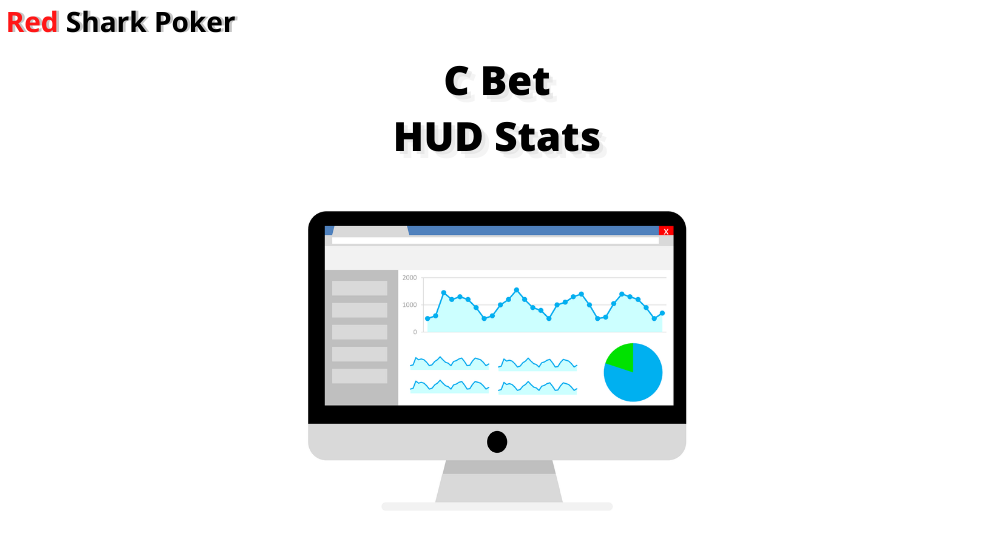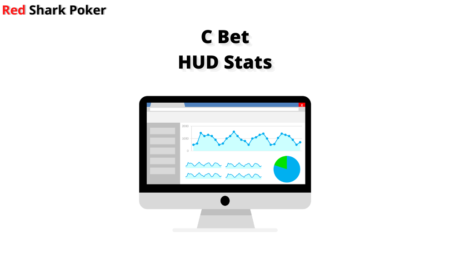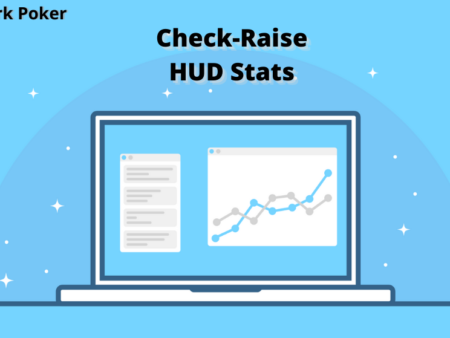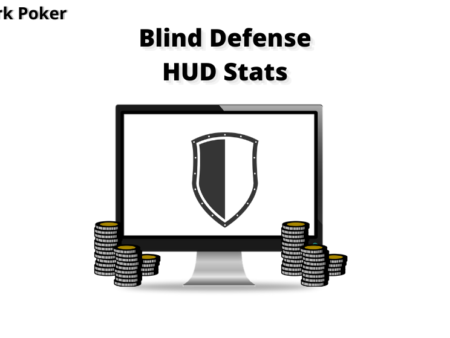

This article is for those players who are using HUD software or planning to use one. If you are a novice player, continue reading to find out how Cbet HUD stats help you to master the important move of continuation bets.
What is a Continuation Bet or Cbet?
A continuation bet or cbet is a bet you make on the flop if you have raised preflop. Cbet is an important bet to make if you have raised preflop as it helps you to continue your preflop story. You hit the flop 1 out of 3 times. When you hit the flop, cbet helps you to value bet and build the pot. In case you miss the flop, you can still bluff if the board has any card that falls in your preflop raise.
Cbet HUD stats can help you to make the right decisions while facing a cbet. Also, you can use the HUD stats to bluff with a cbet and force your opponent to fold. Let’s look at the important HUD stats.
If you don’t know how to make continuation bets, read this: How to Make Cbets in Poker?
Important Cbet HUD Stats
There are two different sets of Cbet HUD stats that you can include in your HUD.
HUD Stats to Check When the Opponent is the Preflop Raiser
- Flop Cbet
- Turn Cbet
- River Cbet
HUD Stats to Check When You are the Preflop Raiser
- Fold to Flop Cbet
Let’s understand these Cbet HUD stats in detail.
When Your Opponent is the Preflop Raiser
Your opponent can hit the flop 1 out 3 times. So, he may not be connecting with the flop every time he cbets. Your opponent could be bluffing, or he could be value betting with his cbet. You need to understand your opponent’s cbetting behaviour before folding or calling.
Look for your opponent’s Flop Cbet HUD stats when you face a cbet.
50% to 70% are Good Cbet HUD Stats
Less than 50%: The opponent cbets less often, which means that he usually bets when he connects with the flop.
More than 70%: The opponent cbets more often, which means that he cbets even if he doesn’t connect with the flop.
Let us understand these HUD stats with an example.
You are on the button with J♠ 9♠, and the MP opens to 3X BB. You decide to call, and everyone else folds.
Flop: K♠ 2♥ 9♦
MP bets half the pot as a continuation bet. What will you do in this situation with a middle pair? Let’s look at the Cbet HUD stats of two different types of opponents against whom you face a cbet in the same situation.
Player A: VPIP 38/ PFR 25/ Flop Cbet 89/ Turn Cbet 39/ River Cbet 32
The VPIP and PFR show that your opponent is a LAG who cbets at a high percentage. However, his Cbet percentage on the turn and river are low. This means that he doesn’t continue betting much after the flop. If his bluff doesn’t work on the flop, he usually checks on the later streets. This is a major leak in his game that you can exploit, which gives you an opportunity to float. If he checks on the turn, you can bet big and force your opponent to fold.
Player A: VPIP 14/ PFR 10/ Flop Cbet 44/ Turn Cbet 40/ River Cbet 38
The VPIP and PFR stats show that your opponent is a NIT who doesn’t cbet a lot. When you are facing a cbet, you have to give him some credit. Also, he continues cbetting on all the street at the same percentage. A King is well within his preflop raise, and he is most likely value betting on the flop. So, it is better to fold here.
When You are the Preflop Raiser
When you are the preflop raiser, the same logic of hitting the flop 1 out of 3 times will apply in your case as well. If you don’t hit the flop, there is a possibility that your opponent might fold to your cbet. If you know your opponent’s Fold to Flop Cbet% HUD stats, you have a chance to bluff and steal the pot.
Let us understand these HUD stats with an example.
You open to 3X Big Blind from MP with K♠ J♠ and the button calls. Everyone else folds.
Flop: 4♠ A♥ 9♦
You have missed the flop, but the Ace on the board falls within your preflop range. You have a chance to bluff here with a cbet. Let’s look at Fold to Flop Cbet% of two different types of opponents against whom you want to bluff in the same situation.
Player A: VPIP 14/ PFR 8/ Fold to Flop Cbet 72
The VPIP and PFR stats show that your opponent is a NIT who folds 72% of the time to a cbet. Your opponent, being a NIT, might be calling with suited connectors or medium pairs. If he had a broadway hand with an Ace, he would have 3-bet. As the Fold to Flop Cbet is high, you have a good chance to bluff and force him to fold.
Player A: VPIP 38/ PFR 11/ Fold to Flop Cbet 26
The VPIP and PFR show that your opponent is a Fish who folds less to a cbet. He also has a wide calling range and might have hit a middle or small pair. If you cbet, you are most likely to be called. So, it is better to check and see a free card that could improve your hand.
Note: To be on the safer side, you should bluff against opponents whose ‘Fold to Flop Cbet’ is more than 50%
Conclusion
Cbet HUD stats give you a great insight into your opponent’s cbetting behaviour. For a better read, check positional percentages of cbetting from both In and Out of Position. Compare the cbet% on every street to find any leak in your opponent’s game. If you miss the flop as a preflop raiser, fold to flop cbet helps you to decide whether to bluff or not. Also, you can see the Fold to Turn Cbet and Fold to River Cbet to plan your double and triple barrel bluffs. Make good use of these valuable stats and be a master of post-flop play!




